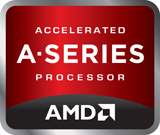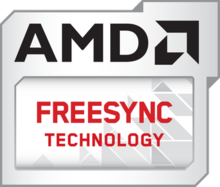
A graphics card is a computer expansion card that generates a feed of graphics output to a display device such as a monitor. Graphics cards are sometimes called discrete or dedicated graphics cards to emphasize their distinction to an integrated graphics processor on the motherboard or the central processing unit (CPU). A graphics processing unit (GPU) that performs the necessary computations is the main component in a graphics card, but the acronym "GPU" is sometimes also used to erroneously refer to the graphics card as a whole.

A graphics processing unit (GPU) is a specialized electronic circuit initially designed for digital image processing and to accelerate computer graphics, being present either as a discrete video card or embedded on motherboards, mobile phones, personal computers, workstations, and game consoles. After their initial design, GPUs were found to be useful for non-graphic calculations involving embarrassingly parallel problems due to their parallel structure. Other non-graphical uses include the training of neural networks and cryptocurrency mining.

High-Definition Multimedia Interface (HDMI) is a proprietary audio/video interface for transmitting uncompressed video data and compressed or uncompressed digital audio data from an HDMI-compliant source device, such as a display controller, to a compatible computer monitor, video projector, digital television, or digital audio device. HDMI is a digital replacement for analog video standards.

Scalable Link Interface (SLI) is the brand name for a now discontinued multi-GPU technology developed by Nvidia for linking two or more video cards together to produce a single output. SLI is a parallel processing algorithm for computer graphics, meant to increase the available processing power.

AMD CrossFire is a brand name for the multi-GPU technology by Advanced Micro Devices, originally developed by ATI Technologies. The technology allows up to four GPUs to be used in a single computer to improve graphics performance.

DisplayPort (DP) is a proprietary digital display interface developed by a consortium of PC and chip manufacturers and standardized by the Video Electronics Standards Association (VESA). It is primarily used to connect a video source to a display device such as a computer monitor. It can also carry audio, USB, and other forms of data.

Screen tearing is a visual artifact in video display where a display device shows information from multiple frames in a single screen draw.

AMD Accelerated Processing Unit (APU), formerly known as Fusion, is a series of 64-bit microprocessors from Advanced Micro Devices (AMD), combining a general-purpose AMD64 central processing unit (CPU) and 3D integrated graphics processing unit (IGPU) on a single die.
Unified Video Decoder is the name given to AMD's dedicated video decoding ASIC. There are multiple versions implementing a multitude of video codecs, such as H.264 and VC-1.

AMD Software is a device driver and utility software package for AMD's Radeon graphics cards and APUs. Its graphical user interface is built with Qt and is compatible with 64-bit Windows and Linux distributions.

Frame rate control (FRC) or temporal dithering is a method for achieving greater color depth particularly in liquid-crystal displays.
Graphics Core Next (GCN) is the codename for a series of microarchitectures and an instruction set architecture that were developed by AMD for its GPUs as the successor to its TeraScale microarchitecture. The first product featuring GCN was launched on January 9, 2012.

Blackmagic Design is an Australian digital cinema company and manufacturer based in Port Melbourne, Victoria, Australia. It designs and produces broadcast and cinema-grade hardware; notably, high-end digital movie cameras, and also develops video editing software, such as the DaVinci Resolve and Blackmagic Fusion applications.
The PlayStation 4 technical specifications describe the various hardware components of the PlayStation 4 home video game console group. Multiple versions of this console have been released since the initial launch of the PlayStation 4, including the PlayStation 4 Slim and the PlayStation 4 Pro. Subsequent versions include changes to the technical specifications of the console.

AMD PowerTune is a series of dynamic frequency scaling technologies built into some AMD GPUs and APUs that allow the clock speed of the processor to be dynamically changed by software. This allows the processor to meet the instantaneous performance needs of the operation being performed, while minimizing power draw, heat generation and noise avoidance. AMD PowerTune aims to solve thermal design power and performance constraints.
G-Sync is a proprietary adaptive sync technology developed by Nvidia aimed primarily at eliminating screen tearing and the need for software alternatives such as Vsync. G-Sync eliminates screen tearing by allowing a video display's refresh rate to adapt to the frame rate of the outputting device rather than the outputting device adapting to the display, which could traditionally be refreshed halfway through the process of a frame being output by the device, resulting in screen tearing, or two or more frames being shown at once. In order for a device to use G-Sync, it must contain a proprietary G-Sync module sold by Nvidia. AMD has released a similar technology for displays, called FreeSync, which has the same function as G-Sync yet is royalty-free.
Video Core Next is AMD's brand for its dedicated video encoding and decoding hardware core. It is a family of hardware accelerator designs for encoding and decoding video, and is built into AMD's GPUs and APUs since AMD Raven Ridge, released January 2018.
Variable refresh rate (VRR) refers to a dynamic display that can continuously and seamlessly change its refresh rate without user input. A display supporting a variable refresh rate usually supports a specific range of refresh rates. This is called the VRR range. The refresh rate can continuously vary seamlessly anywhere within this range.

RDNA is a graphics processing unit (GPU) microarchitecture and accompanying instruction set architecture developed by AMD. It is the successor to their Graphics Core Next (GCN) microarchitecture/instruction set. The first product lineup featuring RDNA was the Radeon RX 5000 series of video cards, launched on July 7, 2019. The architecture is also used in mobile products. It is manufactured and fabricated with TSMC's N7 FinFET graphics chips used in the Navi series of AMD Radeon graphics cards.

The Xbox Series X and Xbox Series S are the fourth generation of consoles in the Xbox series. Released on November 10, 2020, the higher-end Xbox Series X and lower-end Xbox Series S are part of the ninth generation of video game consoles, which also includes Sony's PlayStation 5, released the same month. Both superseded the Xbox One.













